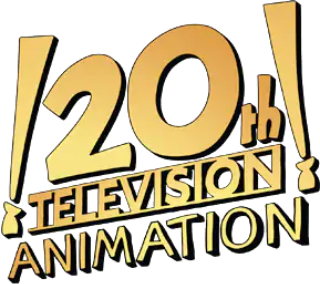
Charles Martin Jones was an American animator, painter, voice actor and filmmaker, best known for his work with Warner Bros. Cartoons on the Looney Tunes and Merrie Melodies series of shorts. He wrote, produced, and/or directed many classic animated cartoon shorts starring Bugs Bunny, Daffy Duck, Wile E. Coyote and the Road Runner, Pepé Le Pew, Marvin the Martian, and Porky Pig, among others.

The Disney animators' strike was a 1941 American film industry work stoppage where unionized employees of Walt Disney Productions picketed and disrupted film production for just under four months.

The International Alliance of Theatrical Stage Employees, Moving Picture Technicians, Artists and Allied Crafts of the United States, Its Territories and Canada, known as simply the International Alliance of Theatrical Stage Employees, is a North American labor union representing over 168,000 technicians, artisans, and craftspersons in the entertainment industry, including live theatre, motion picture and television production, broadcast and trade shows in the United States, its territories, and Canada. It was awarded the Tony Honors for Excellence in Theatre in 1993.
Christopher Mason Savino is an American writer, comic book artist, and former animator. He is well-known as the creator of the animated series The Loud House. Savino has also worked on The Ren & Stimpy Show, Rocko's Modern Life, Dexter's Laboratory, Cow and Chicken, I Am Weasel, The Powerpuff Girls, Samurai Jack, My Gym Partner's a Monkey, Kick Buttowski: Suburban Daredevil, My Little Pony: Friendship Is Magic, Mickey Mouse and Johnny Test.
Hollywood Black Friday, or Hollywood Bloody Friday, is the name given, in the history of organized labor in the United States, to October 5, 1945. On that date, a six-month strike by the set decorators represented by the Conference of Studio Unions (CSU) boiled over into a bloody riot at the gates of Warner Bros.' studios in Burbank, California led by Herbert Sorrell. The strikes helped the passage of the Taft–Hartley Act in 1947 and led to the eventual breakup of the CSU and reorganization of the rival International Alliance of Theatrical Stage Employees (IATSE) leadership.
The Motion Picture Editors Guild is the guild that represents freelance and staff motion picture and television editors and other post-production professionals and story analysts throughout the United States. The Motion Picture Editors Guild is a part of the 500 affiliated local unions of the International Alliance of Theatrical Stage Employees (IATSE), a national labor organization with 104,000-plus members. There are more than 6,000 members of the Editors Guild.

From November 5, 2007 to February 12, 2008, all 12,000 film and television screenwriters of the American labor unions Writers Guild of America, East (WGAE), and Writers Guild of America West (WGAW) went on strike.

The Alliance of Motion Picture and Television Producers (AMPTP) is a trade association based in Sherman Oaks, Los Angeles, California, that represents over 350 American television and film production companies in collective bargaining negotiations with entertainment industry trade unions that include, among others, SAG-AFTRA, the Directors Guild of America, the Writers Guild of America West and East, the American Federation of Musicians, and the International Alliance of Theatrical Stage Employees.

Titmouse, Inc. is an American animation studio based in Los Angeles, California founded in 2000 that develops and produces animated television programming, feature films, music videos, title sequences, commercials, and short films.

Tom Sito is an American animator, animation historian and teacher. He is currently a Professor at USC's School of Cinematic Arts in the Animation Division. In 1998, Sito was included by Animation Magazine in their list of the One Hundred Most Important People in Animation.
William Charles Littlejohn was an American animator and union organizer. Littlejohn worked on animated shorts and features in the 1930s through to the 1990s. His notable works include the Tom and Jerry shorts, the Peanuts television specials, the Oscar-winning short The Hole (1962), and the Oscar-nominated A Doonesbury Special (1977). He was inducted into the Cartoon Hall of Fame and received the Winsor McCay Award and garnered lifetime achievement awards from the Annie Awards and the UCLA Film and Television Archive. Director Michael Sporn has called Littlejohn "an animation 'God'."

The Screen Actors Guild-American Federation of Television and Radio Artists is an American labor union that reflects the 2012 merger of SAG and AFTRA. It represents approximately 160,000 media professionals worldwide. SAG-AFTRA is a member of the AFL-CIO, the largest federation of unions in the United States. SAG-AFTRA is also a member of the International Federation of Actors (FIA).
The Screen Cartoonist's Guild (SCG) was an American labor union formed in 1938 in Los Angeles, California. The SCG was formed in the aftermath of protests at Van Beuren Studios and Fleischer Studios, and represented workers and resolved issues at major American animation studios such as Walt Disney Productions.

20th Television Animation is an American animation studio that creates, develops and produces primarily adult animated television series and specials. It is a unit of Disney Television Studios, a subsidiary of Disney Entertainment, which is a division of The Walt Disney Company.

Stephen Colbert Presents Tooning Out the News (TOTN) is an American live-action/animated satirical news television show created and executive produced by comedian and The Late Show host Stephen Colbert, R. J. Fried, Chris Licht and Tim Luecke. The series premiered on CBS All Access on April 7, 2020.
CBS Eye Animation Productions is an American animation studio, division of CBS Studios owned by Paramount Global. The studio is closely associated with the Star Trek franchise with its first projects, Star Trek: Lower Decks and Star Trek: Prodigy. CBS reinstated it as an animation division in late 2018 before its re-merger with Viacom in late 2019.
The 1937 Fleischer Studios strike was a labor strike involving workers at Fleischer Studios in New York City. The strike commenced on May 7 of that year and ended on October 12. The strike was the first major labor dispute in the animation industry and resulted in the industry's first union contracts.
The 1982 animators' strike was a labor strike conducted by American animators in the Greater Los Angeles area. The strike, organized by the Motion Picture Screen Cartoonists Local 839, was caused by disagreements between the labor union and studios over runaway productions, a term referring to outsourcing production work to outside of the metropolitan area. The strike ran from August to October and ended in failure for the union, who failed to win concessions from the studios.

From May 2 to September 27, 2023, the Writers Guild of America (WGA)—representing 11,500 screenwriters—went on strike over a labor dispute with the Alliance of Motion Picture and Television Producers (AMPTP). With a duration of 148 days, the strike is tied with the 1960 strike as the second-longest labor stoppage that the WGA has performed, only behind the 1988 strike. Alongside the 2023 SAG-AFTRA strike, which continued until November, it was part of a series of broader Hollywood labor disputes. Both strikes contributed to the biggest interruption to the American film and television industries since the COVID-19 pandemic.
VFX Union also known as the IATSE VFX Union, Visual Effects Union or International Alliance of Theatrical Stage Employees Visual Effects Union is a North American visual effects labor union and a wing of the International Alliance of Theatrical Stage Employees.











